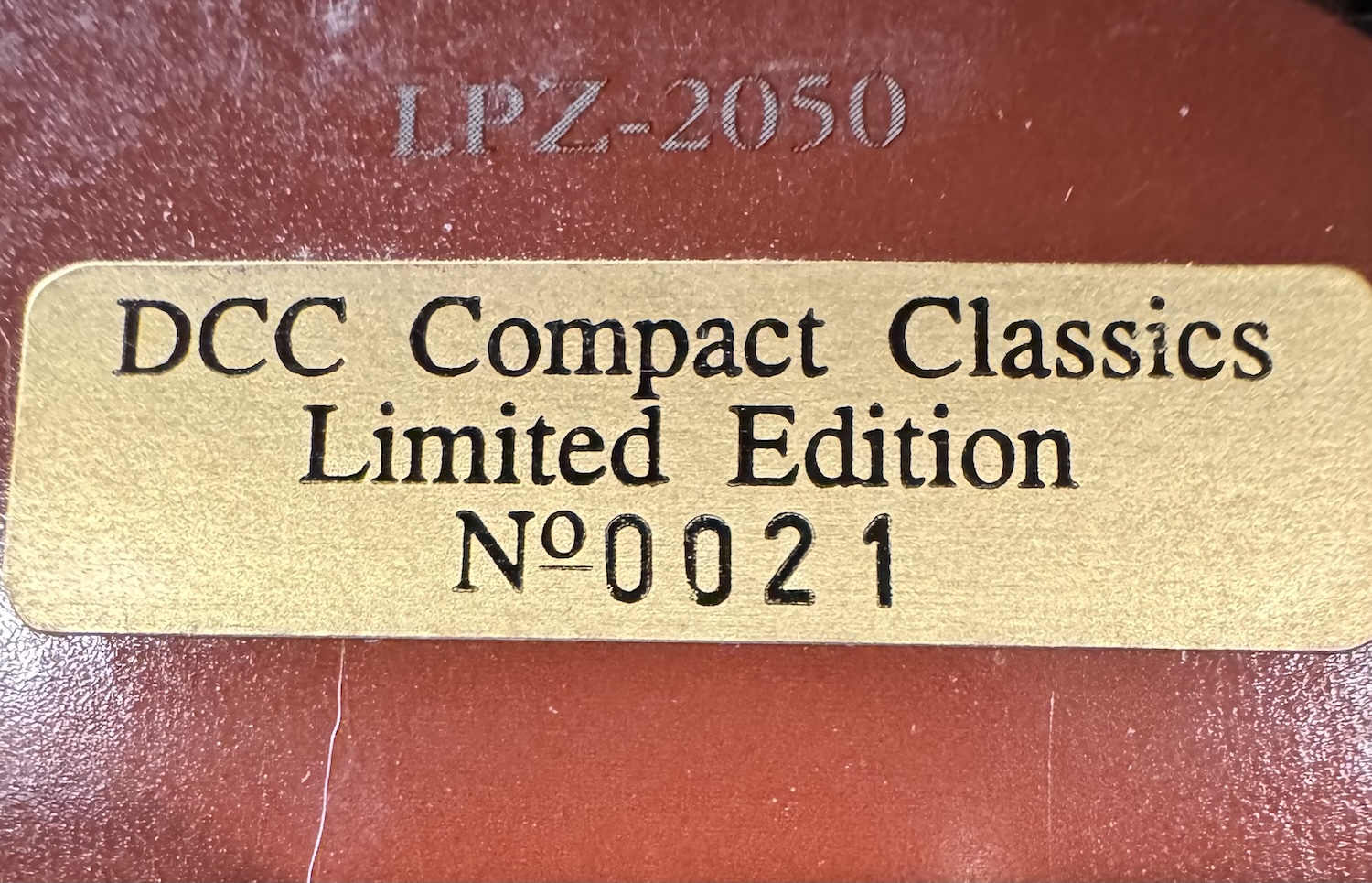"L.A. Woman" DCC Compact Classics, 45rpm and Plangent File Comparisons
you axed for it!
Here's what happened and why the original review did not include comparisons to the DCC Compact Classics version, the Sax cut double 45 and the Plangent processed edition: just as I'd done the original vs UHQR comparison, it was time for a major loudspeaker install so I was down for two days. Rather than wait I chose to post what I already had. Now here's the rest.
First, with the new speakers set up for review (Acora VRCs), I re-listened to tracks from O.G. and UHQR. Found the same results. Then I listened to the Doug Sax mastered double 45 box set Analogue Productions reissue, the D.C.C. Compact Classics edition mastered by Steve Hoffman and cut by Kevin Gray (serial #0021) and lastly the Plangent Processed file download.
It's hard to "love it madly" after so many plays of so many versions but it surely is possible because the band played so tightly and with such feverish stripped down inspiration—even if in retrospect it's like what happens with beautifully colored and patterned salt water fish becoming even more intensely colored just before they die.
Perhaps you've heard about the purported "Steve Hoffman mid bass bump"? Or maybe you've heard it—not that there's anything inherently wrong with that choice, depending upon the musical material—but were you to compare the D.C.C. Compact Classic edition of L.A. Woman with all of the others you'd easily hear Steve's trademarked "bump". It's on the D.C.C. but not on any of the others.
In fact, the top to bottom timbral balance is satisfyingly consistent among the others except for the original Artisan Sound, which is slightly but not excessively low frequently attenuated.
The problem with the "bump" here is that it adds a "chestiness" to Jim Morrison's voice that makes it sound as if he's got a chest cold. And it shrouds the leading edge to Krueger's searing guitar lines, adds a bit of unnecessary "thump" to Densmore's crispy snare and overall, it softens the entire ensemble's smack to the face, which is what you want to feel!
You'll know this is true in a comparison because the others—even the Artisan—don't sound thin and without low end "womp". They just sound right.
To ascertain the effects of inner groove high frequency loss I compared the title track on UHQR to the Sax cut double 45. These are both stupidly great cuts and which you prefer will depend upon tastes and your system. The UHQR has more "womp" that somewhat splits the mid-bass difference between the D.C.C. and the Sax cut but isn't nearly as heavily applied on the UHQR. It's a nice balance.
The Clarity's transient cleanliness produces spectacular cymbal clarity and lets you hear and feel the snare snap and the skin below. Whatever slight high frequency loss there may be resulting from groove radii getting smaller is minor in part because because the Clarity Vinyl quiet allowed a lower level cut without noise intrusion, which means the cut doesn't extend as close to the label as does either the original or the D.C.C.
If you own the Sax cut double 45 and don't mind getting up five times (four to change sides, one to take a leak) you're all set. If you own the D.C.C. or the original and you want a noticeable sonic upgrade the UHQR and the double 45 provide one.
As for the Plangent file, well it proves a few things: first that "digital" (using a good DAC—mine's the dCS Vivaldi One Apex) has gotten much better than a decade ago, second that the Plangent Process removes a layer of grit (in this case not as huge a one as I've heard in some A/B demos conducted by its inventor Jamie Howarth), third that great vinyl playback and this level of great digital playback are approaching parity (though the spectacular digital bass on "L' America" might turn some of you into digital converts yet there's still a slight loss of overall transparency IMO compared to the vinyl) and of course you don't have to get up more than once (to hit the john).
I'm done here other than to write that the Plangent file and the UHQR sounded the most similar.









































.png)








